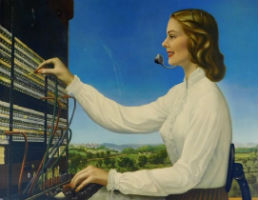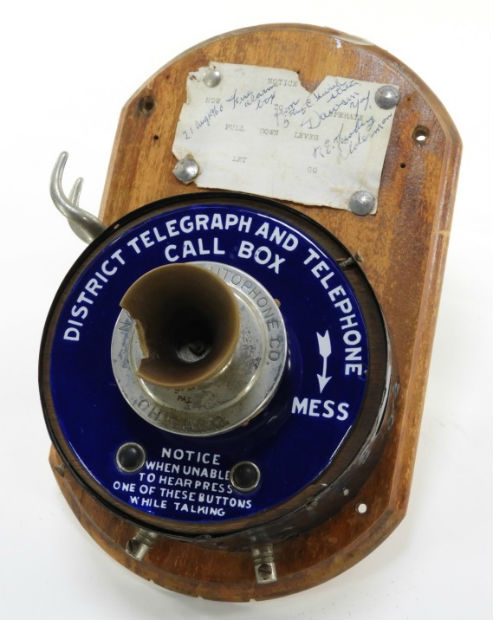
CRANSTON, R.I. – An antique telephone auction featuring items from two regional chapters of Verizon’s Telephone Pioneers of America Museum – one the William J. Denver Chapter no. 20 museum in Providence, R.I., the other the Excelsior Chapter no. 98 in Buffalo, N.Y. – will be held on Saturday, August 4, by Bruneau & Co. Auctioneers. Absentee and Internet live bidding is available through LiveAuctioneers.
The auction consists of an exciting and rare collection of historical telephones, photographs, maps, cables, prototypes and ephemera ranging from the first phone/emergency call box ever installed in the Yukon in Canada to the telephone from President Dwight D. Eisenhower’s Newport, Rhode Island, Summer White House. In all, more than 500 lots will come up for bid.
“This is an exciting sale because historically you get a firsthand glimpse into the early days of mass communication,” said Kevin Bruneau, company president and auctioneer. “No matter how much you see in this business, you come across things every day that amaze. How often do you get to hold the first-ever call box installed in the Yukon for gold miners?”
The metal and wood phone (above), according to a museum label, was installed at Dawson, in the Yukon Territory, at the time of the gold rush, circa 1900. The tag reads: “Combination Telephone and Fire Alarm Box.” Made by National Telephone Co. in Chicago, the phone was finally removed from its pole at Fifth and Church streets in Dawson in August 1960.
“It was a learning experience like no other,” Travis Landry, a Bruneau & Co. specialist and auctioneer, said of the auction catalog. “I felt like it could be a college course on the history of the telephone. It’s wild to think something as simple as a piece of wood could be so historically important, or that President Eisenhower had conversations on a phone, what was discussed.”
The Eisenhower phone is made from plastic and metal and marked behind the cradle “Bell System” and “Made by Western Electric.” It was used at the Newport home formerly known as the “Commandant’s Residence and Quarters Number One.” An original museum label identifies the telephone as “President Eisenhower’s Personal Telephone at the Summer White House.”
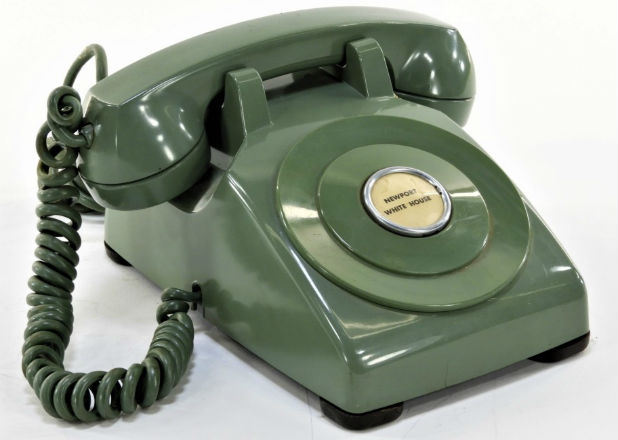
Items pertaining to Alexander Graham Bell, the inventor of the telephone, will include an original model of Bell and Thomas A. Watson’s first prototype phone, accompanied by original patent paperwork dated 1881; and an original floor plank from Bell’s laboratory, indicating the 29½-inch-long wooden plank was “presented by Guthrie J.G. Nicholson on March 10, 1976.”
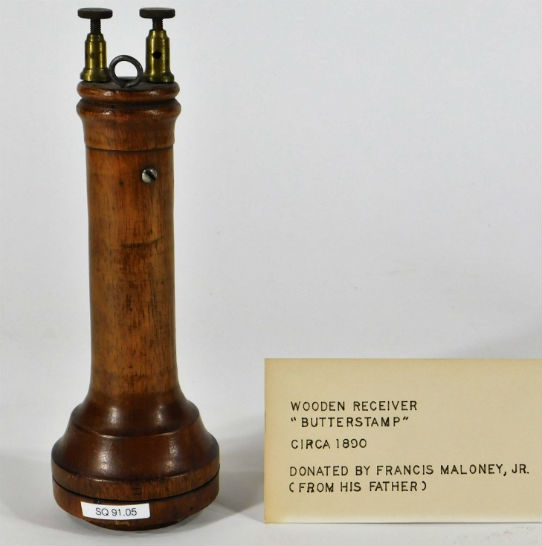
Other Bell-related lots will include an early example of the inventor’s butter stamp turned wooden receiver with brass connections, circa 1890, with a magnet occupying the length of the handle; and an early example of the first long-distance double-pole membrane receiver from the early 20th century, untested, appearing to be complete, 5½ inches tall, made of wood and metal.

A circa 1913 presentation nickel “candlestick” telephone, with museum label stating, “Telephone given to Clint Oliver on his retirement in 1957 by his repair gang at the Gates Circle Garage,” with a display case made by Ralph Huebel, will be sold, as will a Bell System brown color test sample desk rotary phone in good shape marked “Bell System” and “Made by Western Electric.”
Other noteworthy lots will include an early 20th-century Stromberg & Carlson telephone operator switchboard, 51½ inches by 25 inches, in a quartersawn oak case; and a 1984 Summer Olympic Games (Los Angeles) relay torch, one of only 4,500 made, carried prior to the games by John Cox of the Pioneers, Hamburg-Olean Council, with a photo of Cox carrying the torch.
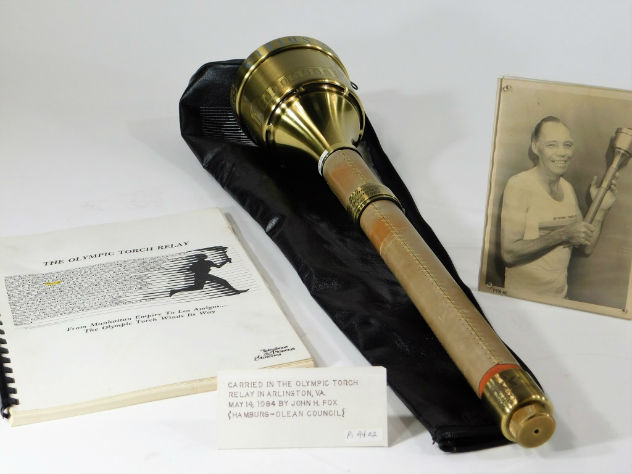
The 300-lot auction will begin at 11 a.m. Eastern Tim on Aug. 4.
For details contact Bruneau & Co. Auctioneers via email: info@bruneauandco.com.
[av_button label=’View the fully illustrated catalog and bid on LiveAuctioneers.’ link=’manually,https://bit.ly/2LOUay5′ link_target=’_blank’ size=’medium’ position=’center’ label_display=” icon_select=’no’ icon=’ue800′ font=’entypo-fontello’ color=’theme-color’ custom_bg=’#444444′ custom_font=’#ffffff’ av_uid=’av-rs3tbv’ admin_preview_bg=”]


